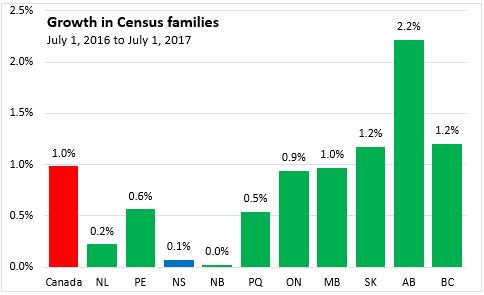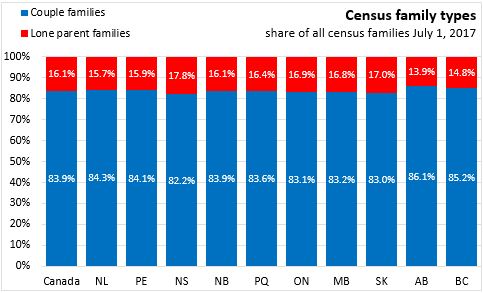The Economics and Statistics Division maintains archives of previous publications for accountability purposes, but makes no updates to keep these documents current with the latest data revisions from Statistics Canada. As a result, information in older documents may not be accurate. Please exercise caution when referring to older documents. For the latest information and historical data, please contact the individual listed to the right.
<--- Return to Archive
For additional information relating to this article, please contact:
November 08, 2017POPULATION OF CENSUS FAMILIES FOR JULY 1, 2017 
The number of census families in Nova Scotia increased by 0.1 per cent from July 1, 2016 to July 1, 2017, reaching 273,109 families. Across Canada, trends in census family growth follow stable trends - with faster growth in Ontario and western provinces and slower growth in Quebec and Atlantic Canada.
The number of couple families in Nova Scotia increased by 0.1 per cent to 224,554 while the number of lone-parent families was unchanged at 48,555. The number of couple families has increased each year since 2012 while the number of lone parent families is smaller in 2017 than it was in 2010.

As a percentage of all census families, Nova Scotia has the highest share of lone-parent families at 17.8 per cent.

Notes: Statistics Canada defines a census family as a married couple (with or without children of either and/or both spouses), a common-law couple (with or without children of either and/or both partners) or a lone parent of any marital status, with at least one child. A couple may be of opposite sex or same sex. Note that this definition excludes unattached individuals and thus is not equal to the number of households.
Source: CANSIM table 051-0055
<--- Return to Archive